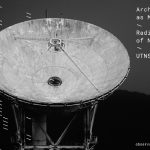“The first examples of what were to become Fluxus event scores date back to John Cage’s famous class at The New School, where artists such as George Brecht, Al Hansen, Allan Kaprow, and Alison Knowles began to create art works and performances in musical form. One of these forms was the event. Events tend to be scored in brief verbal notations. These notes are known as event scores. In a general sense, they are proposals, propositions, and instructions. Thus, they are sometimes known as proposal pieces, propositions, or instructions.”
the Fluxus P e r f o r m a n c e Workbook
edited by Ken Friedman, Owen Smith and Lauren Sawchyn
a Performance Research e-publication 2002
“Paradigm (for Dick Higgins)
Locate an object, not spatially isolated from other objects of its kind nor different from them in any significant way, and designate it the current existing model for all such objects. Observe how the distinctiveness of that object emerges under these conditions.”
Fluxus Event Score, by Peter Frank, 1983
Details/ Documentation of this week’s workshop:





Prepare For Next Week:
1. Inspired by your forensic diagram, brainstorm “ten actions” that include observation & documentation.
2. Select three actions and write them down as instructions. Take a look at the the Fluxus P e r f o r m a n c e Workbook to find inspiration on how to write short and precise instructions. Make sure they include a prompt for visual output.
3. Enact these instructions. Bring the visual documentation and a printout (of the instruction) to class next week.
Reading For Next Week:
the Fluxus P e r f o r m a n c e Workbook
edited by Ken Friedman, Owen Smith and Lauren Sawchyn
a Performance Research e-publication 2002





Comments by Pascal